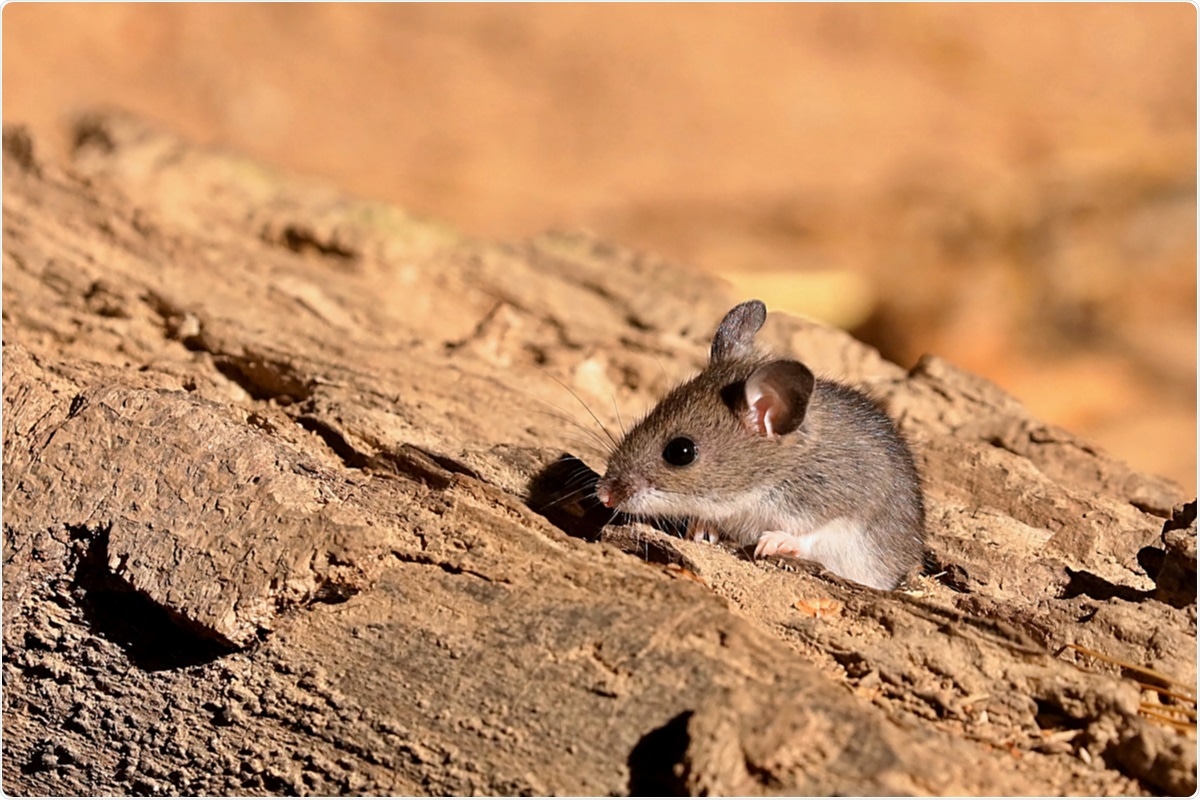In a recent study released on the bioRxiv* preprint server, researchers from the US and Australia show that several common peridomestic species (including deer mice, striped skunks and bushy-tailed woodrats) are amenable to infection with the severe acute respiratory syndrome coronavirus 2 (SARS-CoV-2). The study reports how these mammals are able to shed the virus in respiratory secretions – lending evidence to the fact that human-wildlife interactions may result in continued viral transmission.

Coronavirus disease 2019 (COVID19) has had a far-reaching impact on the global human population; still, thus far little is known on how its causative agent, SARS-CoV-2, actually impacts wildlife. Domestic dogs and cats can be infected with the virus, but are asymptomatic or present with mild clinical disease (with just a handful of exceptions).
On the other hand, farmed mink are not only susceptible to the infection, but the infected animals can also progress to deadly fulminating disease (10,26). In contrast, ferrets (which are closely related to mink) are known to shed the virus after infection, but the course of the disease is subclinical.
However, key species for evaluating SARS-CoV-2 epidemiology are peridomestic animals, represented by wild and feral animals that live within close proximity to humans. As a group, they have the potential to maintain the virus and spread it back to humans.
Hence, a research group from the Colorado State University in the US, US Department of Agriculture, Animal and Plant Health Inspection Service, and The University of Queensland in Australia aimed to determine the relative susceptibility of common peridomestic carnivores and assess their likelihood in propagating the infection.
Viral challenge for peridomestic animals
In this study, the researchers assessed six common peridomestic rodent species for susceptibility to SARS-CoV-2: wild-caught house mice, deer mice, bushy-tailed woodrats, fox squirrels, Wyoming ground squirrels and black-tailed prairie dogs. They have also evaluated three common peridomestic mammals: raccoons, cottontail rabbits and striped skunks.
The obtained strain of the SARS-CoV-2 (WA1/2020WY96) was passaged twice in Vero E6 cells (kidney epithelial cell lineage from an African green monkey) and stocks were frozen at -80°C in Dulbecco’s Modified Eagle Medium with 5% fetal bovine serum and antibiotics.
Three animals from each species (and two for ground squirrels) were chosen to preliminarily evaluate viral shedding and any acute pathological changes. Furthermore, all animals were observed clinically every day, which included assessment for their temperament and the presence of any clinical signs of disease.
Viral isolation was performed on all oral swabs, nasal swabs and tissue samples three days after infection by double overlay plaque assay on Vero cells. Plaque reduction neutralization assays were also been performed, with plaques being picked from culture plates to confirm SARS-CoV-2 viral shedding using polymerase chain reaction (PCR) for each positive animal. Histopathological evaluations were also pursued.
Shedders and non-susceptible species
Of the nine species that had been evaluated, three of them (i.e., deer mice, striped skunks and bushy-tailed woodrats) shed infectious viral particles following challenge. Conversely, the study showed that house mice, raccoons, fox squirrels, Wyoming ground squirrels, cottontail rabbits and black-tailed prairie dogs are not susceptible to SARS-CoV-2 infection.
Furthermore, all species which had detectable viral infections also developed neutralizing antibodies, while the other species did not. None of the tested animals exhibited clinical signs of disease at any time, nor they were observed to behave abnormally after infection in comparison to the acclimation period.
Moreover, none of the animals had visible gross lesions at the time of necropsy. On histopathologic examination, small areas of white blood cells and macrophage infiltration were observed in the lungs of two deer mice and two woodrats. Finally, two skunks presented with well-developed bronchiole associated lymphoid tissue, albeit the inflammation was not evident in the lungs or other tissues.
Hazardous human-wildlife interactions
Our work expands upon the existing knowledge base of susceptible species and provides evidence that human-wildlife interactions could result in continued transmission of SARS-CoV-2", say study authors.
Importantly, their work indicates that so far, most of the exposed wildlife species develop mild or no clinical disease and either fail to shed the virus at all, or shed it shortly at low levels. An equally important finding is that these experimental infections imply that several common rodents, select wild lagomorphs and raccoons can be ruled out as potential SARS-CoV-2 reservoirs.
However, the results of this work and the work of others, combined with the dramatic response to infection seen in certain species such as mink, indicate that the possibility exists of SARS-CoV-2 infecting wildlife, establishing a transmission cycle, and becoming endemic in non-human species", caution the authors of this study.
Such an event would pose a direct threat to the health of wildlife, with the potential of establishing a reservoir host, which could complicate our orchestrated control measures to halt spillover events of not only SARS-CoV-2, but other potential zoonotic infections as well. Hence, experimental research, modeling tools and surveillance are pivotal steps for tackling this issue.
*Important Notice
bioRxiv publishes preliminary scientific reports that are not peer-reviewed and, therefore, should not be regarded as conclusive, guide clinical practice/health-related behavior, or treated as established information.
https://news.google.com/__i/rss/rd/articles/CBMihQFodHRwczovL3d3dy5uZXdzLW1lZGljYWwubmV0L25ld3MvMjAyMTAxMjYvU3R1ZHktc2hvd3Mtc2V2ZXJhbC1wZXJpZG9tZXN0aWMtbWFtbWFsLXNwZWNpZXMtYXJlLXBvdGVudGlhbC1zcHJlYWRlcnMtb2YtU0FSUy1Db1YtMi5hc3B40gGJAWh0dHBzOi8vd3d3Lm5ld3MtbWVkaWNhbC5uZXQvYW1wL25ld3MvMjAyMTAxMjYvU3R1ZHktc2hvd3Mtc2V2ZXJhbC1wZXJpZG9tZXN0aWMtbWFtbWFsLXNwZWNpZXMtYXJlLXBvdGVudGlhbC1zcHJlYWRlcnMtb2YtU0FSUy1Db1YtMi5hc3B4?oc=5
2021-01-26 14:42:00Z
52781330684637
Bagikan Berita Ini














0 Response to "Study shows several peridomestic mammal species are potential spreaders of SARS-CoV-2 - News-Medical.Net"
Post a Comment